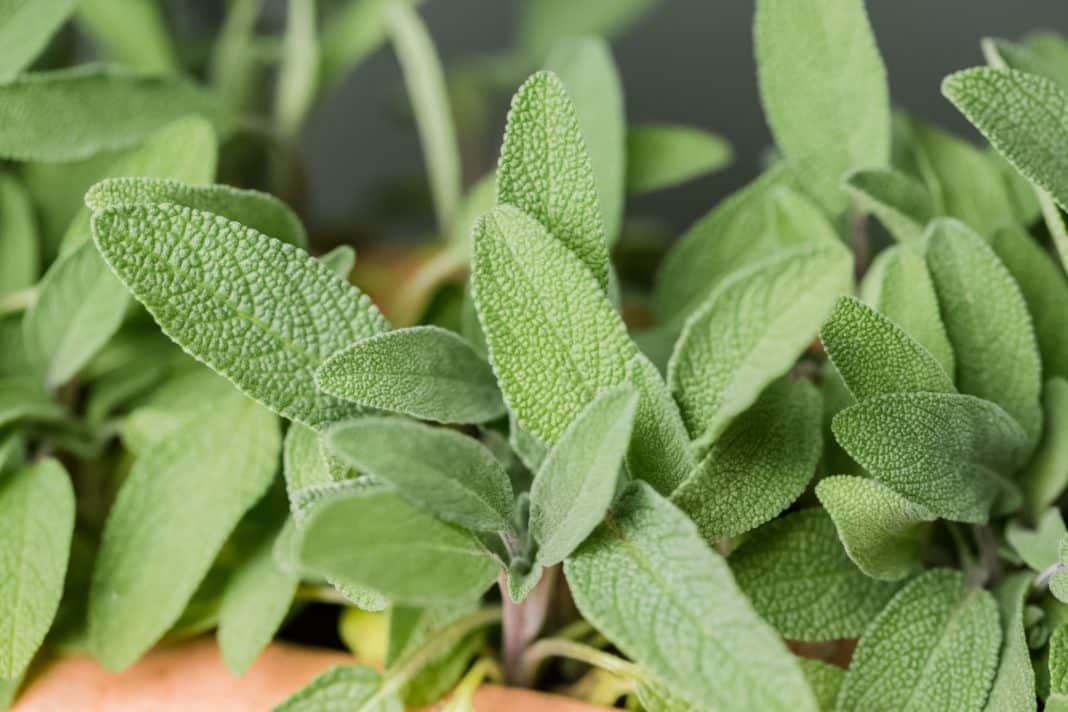Sage is a hardy evergreen perennial with pretty, grayish green leaves that looks just as good in a perennial border as they do in a vegetable garden.
Known as the showstopper in winter dishes, complementing pork and poultry, pairing well with lamb and most memorably used in the Christmas stuffing.
It grows between 12 and 30 inches in height with spikes of Spring flowers, in colours of purple, blue, white or pink.
Note that not all sage varieties are culinary; but the most popular kitchen sage is called Salvia officinalis.
Sage should be planted in full sun, in well draining soil, as it won’t tolerate sitting in wet soil.
Mature plants are relatively drought tolerant, even when the soil is bone dry, the plant may begin to wilt, but it will quickly perk up again after a good watering.
Don’t over fertilise if you are growing for culinary use, as you may get faster growth, but you will most likely lose intensity in flavour.
Every Spring prune the heavier, woody stems to keep the required shape and promote new growth. It’s best to replace the plants every few years so they remain productive.
To harvest sage, simply pinch off a few leaves or snip off small sprigs from the plant.
Stop harvesting in the Autumn, so that the plant can prepare for winter.
Sage’s flavour is best when it’s fresh, however, it can be easily stored, frozen or dried.
To dry, hang sprigs in a shady, well ventilated area and allow them to air dry, wait until the leaves easily crumble, and store in air tight jars.
To freeze, put leaves or stalks on a tray in the freezer, then store the leaves in a container.
You can also blend the leaves with oil, then put the ground mixture into ice cube trays and then freeze.
Sage is also believed to have medicinal properties that may be good for improving memory and helping resolve stomach ailments.





